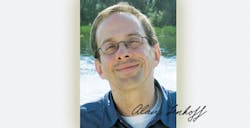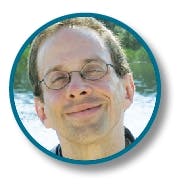This month’s issue of MLO contains something new, at least in my time as editor: One of the two parts of the Continuing Education section is an article written by a teacher and his students. Dick Y. Teshima, MPH, MT(ASCP), an associate professor and program chair at the University of Hawaii at Manoa, John A. Burns School of Medicine, Medical Technology program, assures me that students Nikolas Butrick, Andrea Cadelina, Youngeun Choi, Wang Lio, Jennifer Lum, and Amber Tarango all played key roles in preparing the manuscript for “EDTA in transit: degenerative changes in blood cell morphology.”
The article describes a class research project, a valuable analysis of the degeneration of blood components on days 2 through 6 after collection. Professor Teshima’s group’s findings have important implications in the context of the growing trend of remote-site sample collection.
During my tenure as editor, MLO had printed work by teachers and their students, but not as I recall as CE stories. It’s a tribute to the expertise and presentation of Teshima’s group that I worried not for a minute about whether the manuscript would be sufficiently “meaty” to be the basis for questions on a CE test.
All of which got me thinking, or rather remembering, something that a professor told me, um, a few years ago, when I was a graduate student. He told me that part of his job as a teacher of grad students was to help us increase our knowledge, of course, but part of it also was to help us assume, in our writing, the identity of professionals. That is, there is a big difference between a student paper in which the student tries to show the teacher that he or she knows the material, and a scholarly paper in which the student assumes an air of equality with his or her readers, and shares insights as one professional to another.
The tone of voice is very different. “Share, not show,” was my professor’s motto; he was training us, he said, to “join the conversation” about our area of expertise, to become part of the ongoing interchange among professionals within the field.
That is what Teshima’s group did so well, and I invite other academics and their students to see MLO as a possible outlet for publishing their work. This is, after all, your journal — “you” being not only clinical laboratory professionals, but aspiring laboratorians. I can’t promise that I will accept your work for publication, but I can promise that I will consider it, respond to your query letter or manuscript, and work with you to increase its chances of being published.
Perhaps that is one thing we can talk about at the AACC Annual Scientific Meeting & Clinical Lab Expo, August 1–3. MLO will be at Booth 6, right outside the exhibit hall entrance; you can’t miss us. If you will be at AACC, please drop by and say hi. Let’s talk about how we can make MLO more valuable to YOU. (Of course, if you are not attending the conference, you can always write me at [email protected]).


